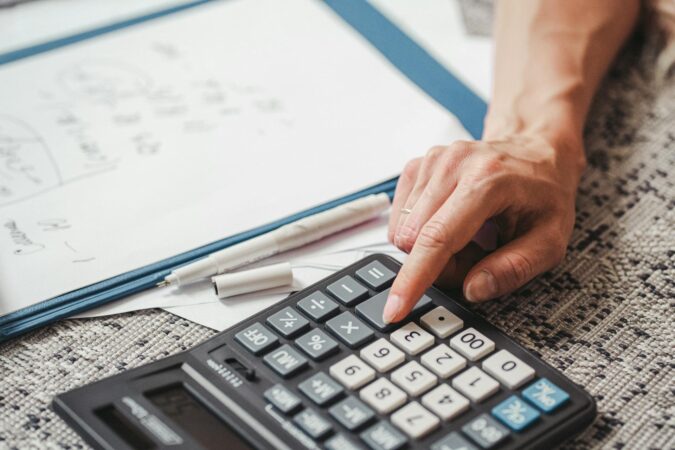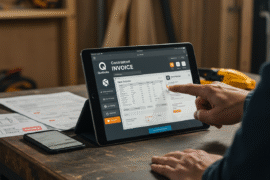This article may contain references to products or services from one or more of our advertisers or partners. We may receive compensation when you click on links to those products or services. Nonetheless, our opinions are our own.
The information presented in this article is accurate to the best of our knowledge at the time of publication. However, information is subject to change, and no guarantees are made about the continued accuracy or completeness of this content after its publication date.
- Should You Use Your Tax Refund to Pay Off Debt?
- Debt as a Barrier to Financial Progress
- Advantages of Allocating Your Refund Toward Debt
- Debt Type Considerations and Priorities
- Weighing Debt Repayment Against Savings
- Reimagining Financial Goals Post-Refund
- Conclusion
- Frequently Asked Questions
- Recommended Reads
Should You Use Your Tax Refund to Pay Off Debt?
Receiving a tax refund can present a rare moment of financial flexibility. For many individuals, it offers a chance to reassess obligations, reduce burdensome balances, and recalibrate personal finances. Rather than approaching the refund as extra income to be spent spontaneously, it may be wise to approach it as a tool to enhance long-term financial stability.
Debt as a Barrier to Financial Progress
High-interest debt continues to be a significant strain on household budgets, often compounding silently over time. Using a tax refund to reduce these liabilities can diminish the cost of borrowing and improve monthly cash flow. Not all debts, however, weigh equally on financial health. Prioritizing where to allocate funds is vital.
Consider These Variables
- Interest Rates: Debts with high interest typically cost the most over time.
- Minimum Payments: Always maintain payments to prevent negative credit impacts.
- Emergency Reserve: If no cash reserve exists, setting aside a portion of the refund for unexpected expenses should be part of the decision-making process.
| Debt Type | Typical Interest Rate |
|---|---|
| Credit Card Debt | 15%–25% |
| Personal Loans | 10%–36% |
| Student Loans | 3%–12% |
Tax refunds can be a practical way to ease the weight of these balances, particularly those with high compounding interest.
Advantages of Allocating Your Refund Toward Debt
Repaying a portion of debt with a lump sum can advance repayment schedules, reduce interest burdens, and provide a greater sense of control over personal finances. The emotional benefit of having fewer outstanding balances should not be overlooked, especially when financial stress is constant.
Practical Impacts
- Reduced interest accumulation over time
- Lower monthly obligations
- Improved credit utilization ratios, which may positively influence credit scores
| Debt Type | Average Rate | Recommended Allocation |
|---|---|---|
| Credit Cards | 15–25% | High Priority |
| Personal Loans | 10–20% | High Priority |
| Student Loans | 4–7% | Consider When Feasible |
The greatest benefit typically comes from reducing debts with high interest rates and no tax-deductible benefit.
Voted "Best Overall Budgeting App" by Forbes and WSJ
Monarch Money helps you budget, track spending, set goals, and plan your financial future—all in one app.
Get 50% OFF your first year with code MONARCHVIP
Debt Type Considerations and Priorities

Not all forms of debt are financially detrimental in the same way. Some serve a strategic function or carry manageable terms, while others can hinder financial advancement. A methodical review of all liabilities allows for more intentional allocation of refund dollars.
How to Evaluate
- Credit Card Debt: With some of the highest rates in consumer finance, this category often warrants the earliest attention.
- Student Loans: These often offer flexible repayment plans, and in some cases, tax-deductible interest.
- Personal Loans: Depending on the lender and credit history, these may vary widely in rate and term.
- Mortgage Loans: Typically low in interest and tied to appreciating assets, these are usually a lower priority unless nearing final repayment.
| Type of Debt | Rate (%) | Balance | Projected Interest Savings |
|---|---|---|---|
| Credit Card | 20 | $2,000 | $400 |
| Student Loan | 5 | $10,000 | $500 |
| Personal Loan | 15 | $5,000 | $750 |
| Mortgage | 3 | $100,000 | $3,000 |
Even modest payments toward these balances can produce measurable savings over time.
Weighing Debt Repayment Against Savings
Some may hesitate to allocate an entire refund toward debt. This can be a rational concern. Balancing debt repayment with other financial priorities can promote long-term resilience. A hybrid approach can make a refund more effective across both short-term needs and long-term plans.
General Allocation Models
| Situation | Debt (%) | Emergency Fund (%) | Short-Term Savings (%) |
|---|---|---|---|
| High Debt, No Savings | 70 | 15 | 15 |
| Moderate Debt, Modest Fund | 50 | 20 | 30 |
| Low Debt, Emergency Reserve | 30 | 10 | 60 |
Each financial situation is unique, but this kind of division encourages both relief from interest-bearing liabilities and preparation for unexpected events.
Reimagining Financial Goals Post-Refund
Once debts are reduced or eliminated, the opportunity arises to redirect resources toward long-term plans. These may include savings for specific purchases, retirement contributions, or investment accounts. Building structured financial habits after receiving a refund helps maintain progress beyond the momentary benefit.
Examples of Post-Refund Targets
| Financial Goal | Target Amount | Timeline |
|---|---|---|
| Emergency Reserve | $10,000 | 12 months |
| Retirement Account | $5,000 | End of Year |
| Home Repairs Fund | $2,000 | 6 months |
When structured intentionally, tax season can become not just a time of recovery but renewal.
Conclusion
A tax refund can serve as a powerful tool for strengthening financial footing. When used thoughtfully, it can reduce burdensome interest, open room in the budget, and support progress toward more meaningful financial objectives. Whether directed fully toward debt or balanced with saving efforts, the decisions made with a refund have a lasting impact beyond tax season.
Frequently Asked Questions
What are the benefits of using a tax refund to pay off debt?
It reduces the total interest paid over time, may enhance credit scores through better utilization, and provides greater financial peace.
Which debts should be paid off first?
Start with debts that carry high interest and no potential tax benefit, such as credit cards or payday loans.
Can I split my refund between debt and savings?
Yes. In many cases, allocating some to an emergency fund while also reducing high-interest debt can be a sound approach.
What repayment method should I use?
The avalanche method (highest interest rate first) is often the most cost-effective. However, the snowball method (smallest balance first) may be more motivating for some individuals.
What if I can’t use the refund for debt repayment?
If repayment isn’t possible, consider putting the refund toward expenses that reduce future financial strain, such as medical care, education, or reliable transportation.
How do I avoid falling back into debt?
Establishing a spending plan, building a modest emergency reserve, and revisiting financial goals monthly can help prevent old habits from resurfacing.

Reviewed and edited by Albert Fang.
See a typo or want to suggest an edit/revision to the content? Use the contact us form to provide feedback.
At FangWallet, we value editorial integrity and open collaboration in curating quality content for readers to enjoy. Much appreciated for the assist.
Did you like our article and find it insightful? We encourage sharing the article link with family and friends to benefit as well - better yet, sharing on social media. Thank you for the support! 🍉
Article Title: Should You Use Your Tax Refund to Pay Off Debt?
https://fangwallet.com/2025/06/12/tax-refund-use/The FangWallet Promise
FangWallet is an editorially independent resource - founded on breaking down challenging financial concepts for anyone to understand since 2014. While we adhere to editorial integrity, note that this post may contain references to products from our partners.
The FangWallet promise is always to have your best interest in mind and be transparent and honest about the financial picture.
Become an Insider

Subscribe to get a free daily budget planner printable to help get your money on track!
Make passive money the right way. No spam.
Editorial Disclaimer: The editorial content on this page is not provided by any of the companies mentioned. The opinions expressed here are the author's alone.
The content of this website is for informational purposes only and does not represent investment advice, or an offer or solicitation to buy or sell any security, investment, or product. Investors are encouraged to do their own due diligence, and, if necessary, consult professional advising before making any investment decisions. Investing involves a high degree of risk, and financial losses may occur including the potential loss of principal.
Source Citation References:
+ Inspo
There are no additional citations or references to note for this article at this time.












































